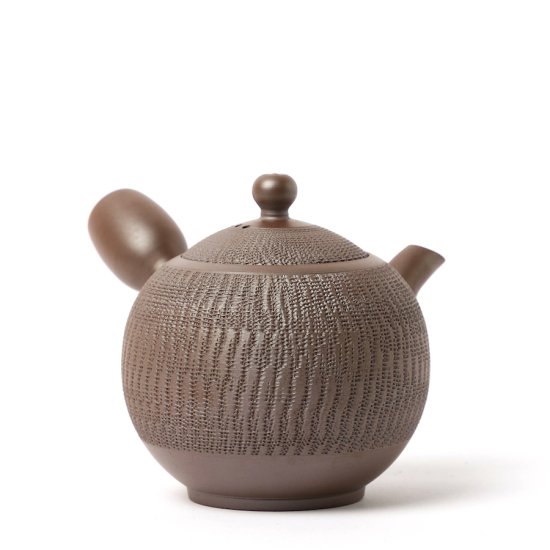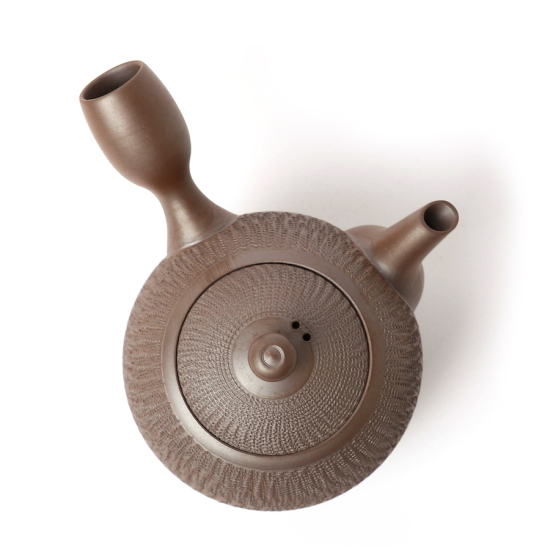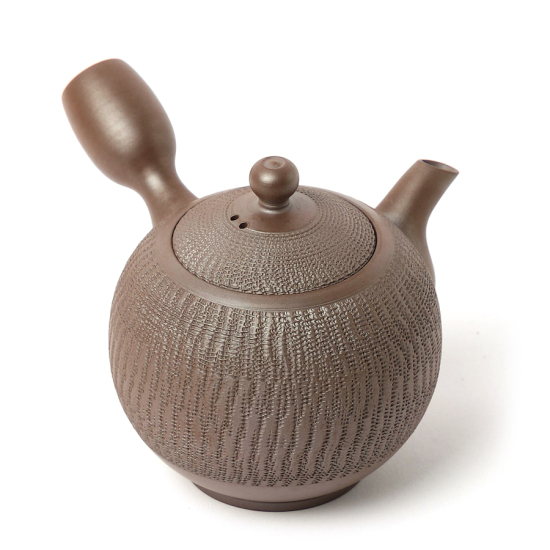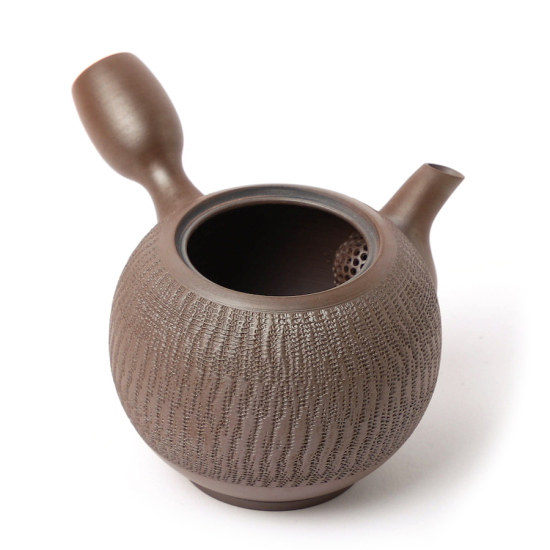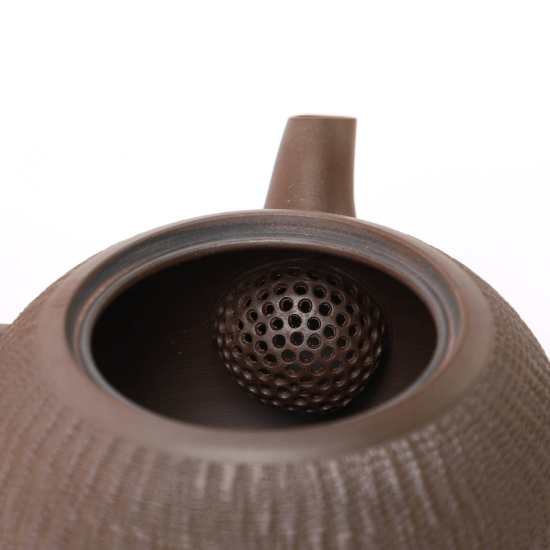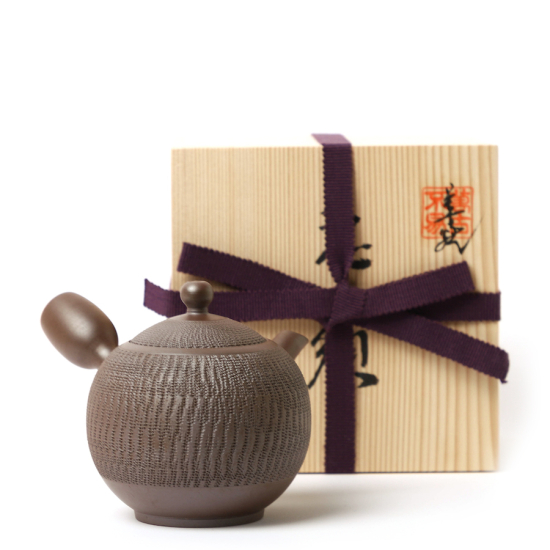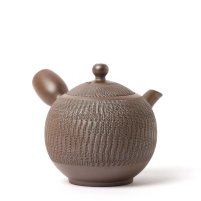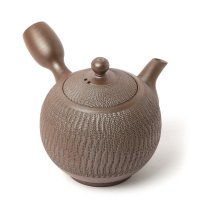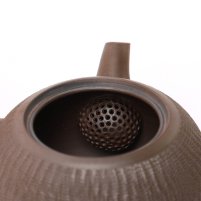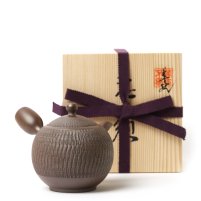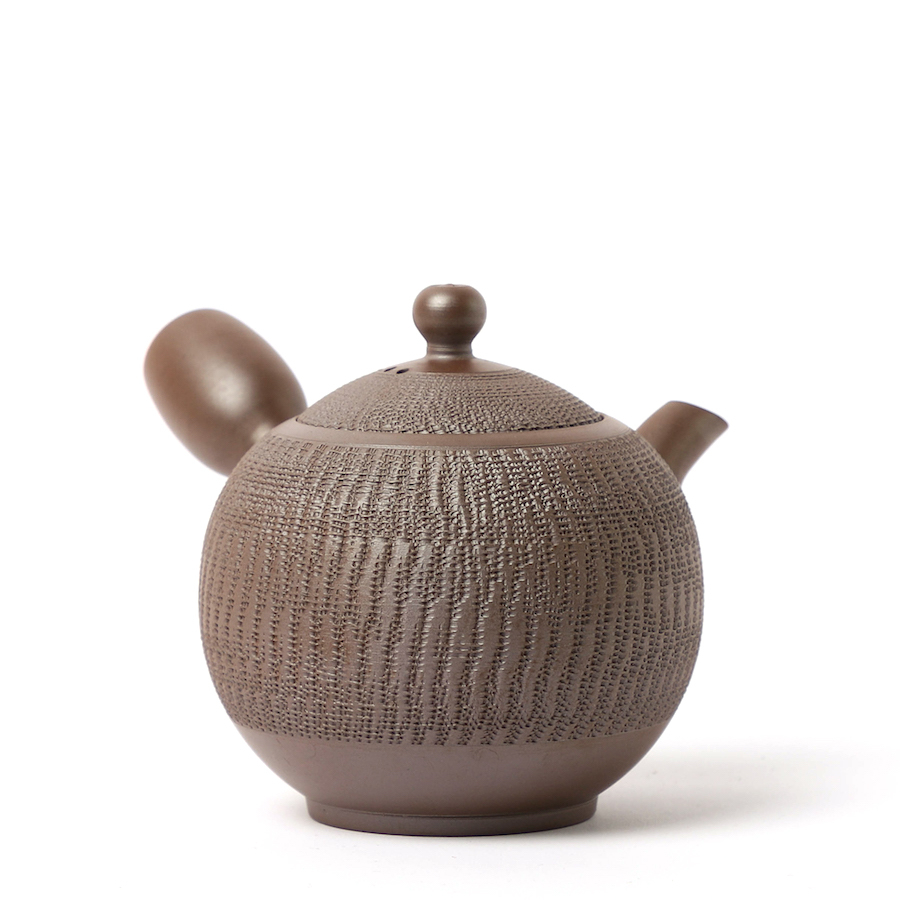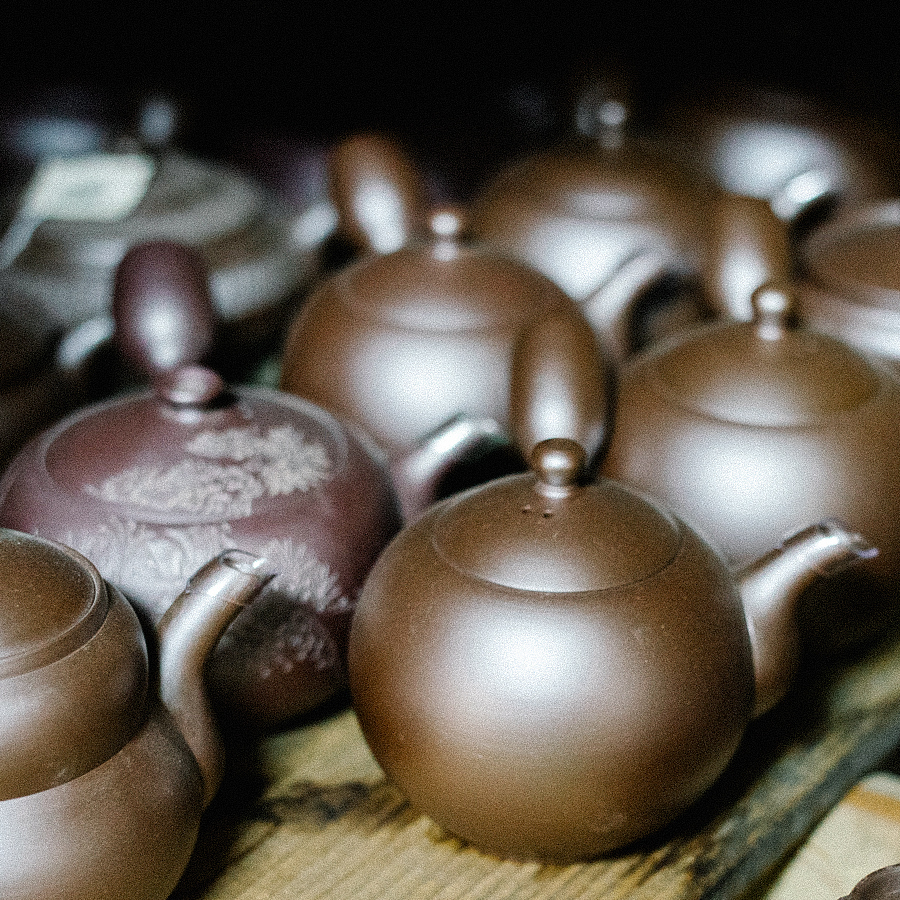Shidei banko will quickly develop a patina and become more glossy with use. It is natural that fingerprints will stand out on the surface in the first few months but these will begin to subside as the surface starts to develop a deep lustre. When cleaning, only use water and a soft cloth, then leave to air dry naturally. Do not use detergents or put in the dishwasher. Hard water may cause limescale deposits to develop, in which case rinse with soft bottled water, then wipe with a soft cloth.
Banko Kyusu
MARUBIRI 丸ビリ
SKU
4108
Yoshi En has recently grown out of Sunday Natural to become an independent premium tea store. As part of this transition, some products may still be shipped in Sunday Natural packaging.
Handcrafted by the legendary Banko-yaki craftsman Masaki Tachi, the rounded Marubiri kyusu decorated with a meticulous biri pattern is a testament to his mastery. This larger kyusu brews three small cups, while the unglazed iron-rich shidei clay highlights the sweetness of green teas.
| Type | Side-handle Banko-yaki kyusu |
| Origin | Yokkaichi, Mie prefecture, Japan |
| Maker | Tachi |
| Volume | 320ml |
| Dimensions | Ø9.3 x 7.4cm |
| Weight | 228g |
| Material | Ceramic |
| Decoration | - |
| Finish | Unglazed (yakishime) |
| Manufacture | Handmade on potter's wheel (rokuro) |
| Strainer | Built-in ceramic debeso filter |
| Artist's mark | Seal to base |
| Packaging | Signed wooden box (kiribako) |
| Each item is handmade therefore colour and size may vary slightly. |
In stock



